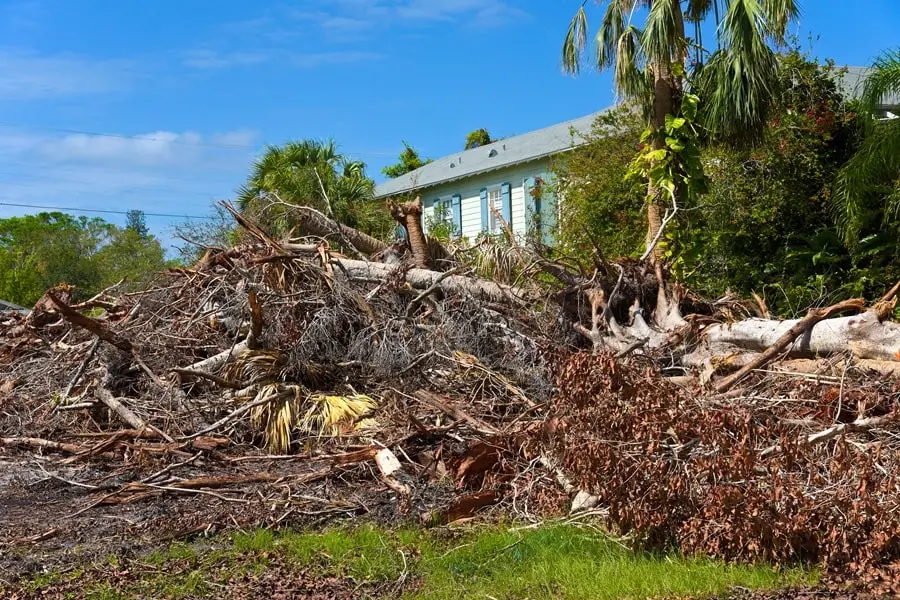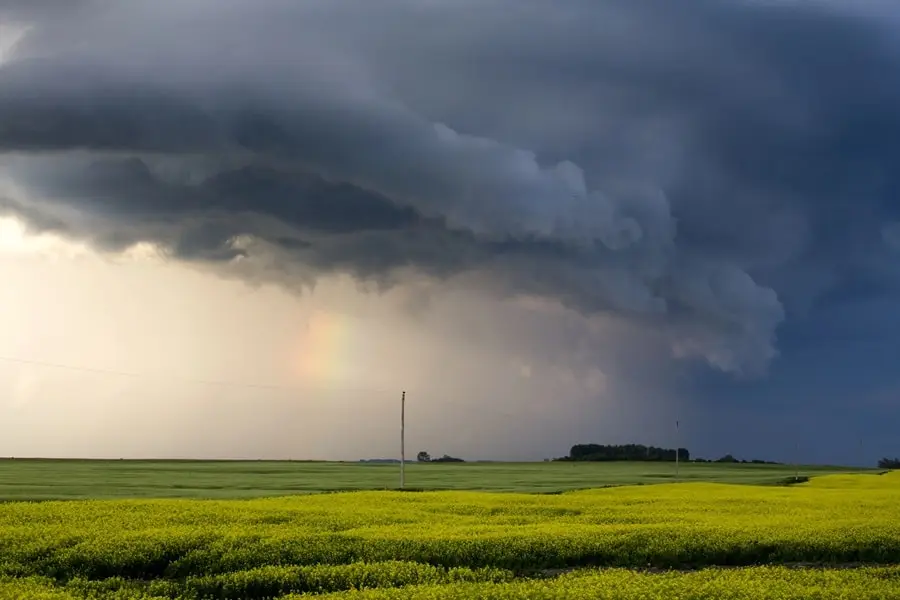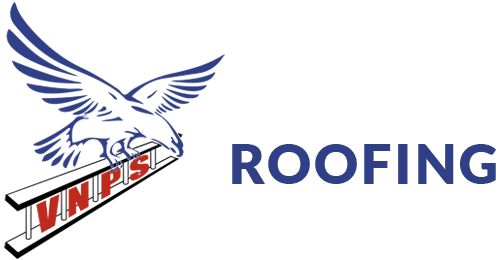Tampa Hurricane Roof Damage: How to Spot, Repair, and Prevent Costly Issues

Tampa is in a high-risk hurricane zone, where winds exceeding 100+ mph, torrential rain, and flying debris pose a major threat to homes and businesses every storm season. Even roofs designed to meet Florida’s hurricane building codes can sustain damage when exposed to prolonged wind pressure, flying debris, and water intrusion.
While some damage—like missing shingles or fallen tree limbs—is obvious, other storm-related issues, such as weakened roofing materials, hidden leaks, and structural weakening, may not be visible right away.
Don’t wait for the next storm to expose hidden damage. Schedule a Free Roof Inspection with our Tampa roofing experts today and ensure your home is protected.
Key Takeaways
- Hurricanes Can Compromise Your Roof – Wind uplift, water intrusion, and debris impact weaken roof structures.
- Warning Signs May Be Subtle – Lifted shingles, ceiling stains, or attic moisture can indicate serious damage.
- Delaying Repairs Can Be Costly – Small issues can lead to mold, roof leaks, and denied home insurance claims.
- Insurance Claims Have a One-Year Deadline – Florida law requires hurricane-related claims to be filed within one year of landfall.
- A Professional Roof Inspection Can Save You Thousands – Preventative maintenance ensures compliance with Florida’s wind resistance standards.
The Key Ways Hurricanes Damage Roof Structures in Tampa & How To Spot It
Hurricanes bring a dangerous combination of high winds, heavy rainfall, and airborne debris, all of which can severely impact the structural integrity of your roof. Even hurricane-rated roofs can suffer damage from prolonged wind exposure, water intrusion, and flying debris. Spotting hurricane damage early can prevent costly roof repair—here’s how to fix common storm-related issues.
Wind Uplift
Hurricane-force winds (74+ mph) create uplift pressure that can loosen or completely remove shingles, tiles, or entire roofing sections. Standard asphalt shingles may begin peeling at wind speeds as low as 45 mph, while impact-resistant Owens Corning shingles are designed to provide superior wind resistance, reducing the risk of storm-related damage.
Signs of Wind Uplift Damage:
- Missing or curled shingles
- Lifted shingle edges or exposed underlayment
- Loose flashing around chimneys, skylights, and vents
Learn more about roofing material options in our blog, Metal Roof vs. Shingles Cost.
Flying Debris Impact
Hurricane winds turn tree branches, roof tiles, and outdoor furniture into dangerous projectiles. These can puncture shingles, crack tiles, or dent metal roofs, causing significant structural damage.
Duro-Last PVC roofing membranes provide superior puncture resistance, making them a great choice for commercial properties that need extra protection against airborne debris.
Signs of Debris Damage:
- Dented metal roofing or punctured shingles
- Cracked or broken roof tiles
- Torn roof sections or missing materials
Rain & Water Intrusion
Hurricanes often bring 10+ inches of rain within 24 hours, overwhelming weak points in a roof. Once water seeps through cracks, missing shingles, or flashing failures, it can soak attic insulation, damage ceilings, and lead to mold growth.
Low-slope and flat roofs are particularly vulnerable due to slower drainage, making waterproofing materials like Duro-Last PVC membranes essential for long-term protection.
Signs of Water Damage:
- Water stains on ceilings or walls
- Damp or sagging attic insulation
- Mold or mildew growth inside your home
Discover more signs of roof leaks in our guide, Roof Leaks in Tampa: Causes & Signs.
Overhangs and Eaves Weakness
Hurricane-force winds can easily lift and detach overhangs, soffits, and fascia, exposing the roof structure to wind-driven rain. Once damaged, these weak points allow water intrusion, which can lead to leaks, insulation damage, and mold growth.
Signs of Overhang & Eaves Damage:
- Loose or missing soffits and fascia
- Water stains near roof edges or exterior walls
- Visible gaps allowing wind-driven rain to enter
Structural Weakening
Not all hurricane damage is immediate—prolonged exposure to wind stress, moisture, and repeated storms can slowly weaken a roof’s structure over time. Wood rot, rust, and loose fasteners can cause roof decking to sag, leading to potential collapse if left unaddressed.
Signs of Structural Weakening:
- Sagging rooflines or visible dips in the structure
- Persistent leaks or worsening water stains after storms
- Soft or weakened roof decking when inspected

Hurricane Roof Repairs: Fixing Storm Damage Before It Gets Worse
Even minor hurricane damage can lead to expensive repairs if left unaddressed. Timely Tampa roof repairs protect your home, prevent structural deterioration, and help maintain insurance coverage.
Replace Missing or Lifted Shingles
High winds can lift or tear away shingles, exposing your roof to leaks.
Solution: Replace missing shingles with impact-resistant Owens Corning shingles designed to withstand strong winds.
Patch Minor Leaks Before They Worsen
Leaks from heavy rain can spread quickly, damaging insulation and interior ceilings.
Solution: Apply roof sealants or flashing reinforcements around vents, chimneys, and seams to prevent further water intrusion.
Reinforce Damaged Flashing, Soffits & Gutters
Loose or broken flashing and soffits allow wind-driven rain to seep in, leading to mold and structural damage.
Solution: Secure loose flashing with high-quality sealants and reinforce soffits to prevent wind uplift.
Seal & Re-Coat Waterproof Membranes for Flat Roofs
Flat and low-slope roofs are prone to pooling water and leaks after hurricanes.
Solution: Apply Duro-Last PVC roof coatings or elastomeric sealants to restore waterproofing and prevent future leaks.
What Happens if Roof Damage is Left Unchecked?
Ignoring storm damage is like ignoring a cracked foundation—it will only get worse. Even minor damage can quickly escalate into serious structural issues, affecting the roof and the overall stability of your home.
Common Risks of Unrepaired Storm Damage:
- Leaks will spread, weakening the roof deck, attic insulation, and walls.
- Mold growth will become a health hazard, especially for individuals with allergies or respiratory issues.
- Small repairs will turn into major reconstruction projects, increasing costs.
- Insurance companies may deny your claim if they determine that delayed maintenance contributed to the damage.
Homeowners covered by home insurance policies should document damage quickly and work with a licensed Florida roofing contractor for Tampa roof repair. This helps prevent delays or lengthy appeals processes if an insurance company denies a claim due to insufficient documentation.
Need a Roof Replacement? Learn more about our flexible financing options.
Filing a Hurricane Roof Damage Insurance Claim?
Navigating home insurance claims after a hurricane can be overwhelming. Florida law requires claims to be filed within one year of landfall—don’t wait.
What to Do Next:
- Step 1: Schedule a Free Roof Inspection – We assess damage and provide a detailed report for your insurer.
- Step 2: Document & File Quickly – Our team helps you gather photos, estimates, and required details for a smoother claim process.
- Step 3: Protect Your Investment – Addressing damage quickly prevents denied claims, worsening leaks, and costly structural damage.
Need help? Call (813) 609-5596 today for a Free Hurricane Roof Inspection.
How to Hurricane-Proof Your Roof & Prevent Storm Damage
Protecting your home before hurricane season is the best way to avoid costly storm damage and roof repairs. Take these proactive steps to reinforce your roof before the next big storm hits:
- Schedule a Pre-Hurricane Roof Inspection: A professional roof inspection can identify weak shingles, loose flashing, or hidden leaks before they become major problems during a storm.
- Upgrade to Impact-Resistant Owens Corning Shingles: Standard asphalt shingles may start peeling at 45 mph winds, but impact-resistant shingles provide better wind resistance and reduce the risk of damage.
- Reinforce Flashing, Soffits & Gutters: Strong winds can rip off soffits, loosen flashing, and clog gutters with debris, leading to water intrusion and roof leaks. Ensure these areas are properly secured and sealed.
- Apply Waterproof Coatings for Flat & Low-Slope Roofs: Duro-Last and elastomeric roof coatings create a watertight barrier, preventing standing water damage on commercial and low-slope roofing systems.
- Trim Trees & Secure Outdoor Furniture: Overhanging branches and loose patio furniture become dangerous projectiles in hurricane-force winds, leading to punctured roofs and cracked shingles. Trim trees and secure outdoor items before the next storm.
Why Homeowners Trust Veterans National Property Services
- Local Tampa Roofing Experts – Specializing in storm-ready roofing solutions for Florida’s extreme weather
- Fast, Reliable Repairs – Quick response for urgent storm damage repairs.
- Licensed and Insured Roofing Contractors – High-quality roofing work backed by a warranty, ensuring your roof meets Florida’s building codes and wind-load standards.
- Insurance Claim Assistance – Helping homeowners document hurricane damage for insurance claims.
- Wind-Resistant Roofing Materials – Owens Corning, Duro-Last, and impact-resistant options designed for Florida hurricanes.
Thinking About a Roof Upgrade? Learn more about our Roof Replacement in Tampa.
Don’t Wait Until It’s Too Late – Protect Your Home Before the Next Hurricane
Hurricane season in Tampa brings high winds, heavy rain, and flying debris that can weaken even well-built roofs. The best time to reinforce your roof is before the storm hits—not after damage has already occurred. Scheduling a professional roof inspection now can help you catch small issues before they turn into costly repairs.
Upgrading to impact-resistant Owens Corning shingles or Duro-Last waterproof membranes can add an extra layer of protection, reducing the risk of storm-related damage. If you suspect any issues after a storm, acting fast can prevent worsening leaks, mold growth, and even denied home insurance claims.
Your home deserves the best protection. Call (813) 609-5596 today to schedule a Free Hurricane Roof Inspection and prepare your roof for whatever this storm season brings.

